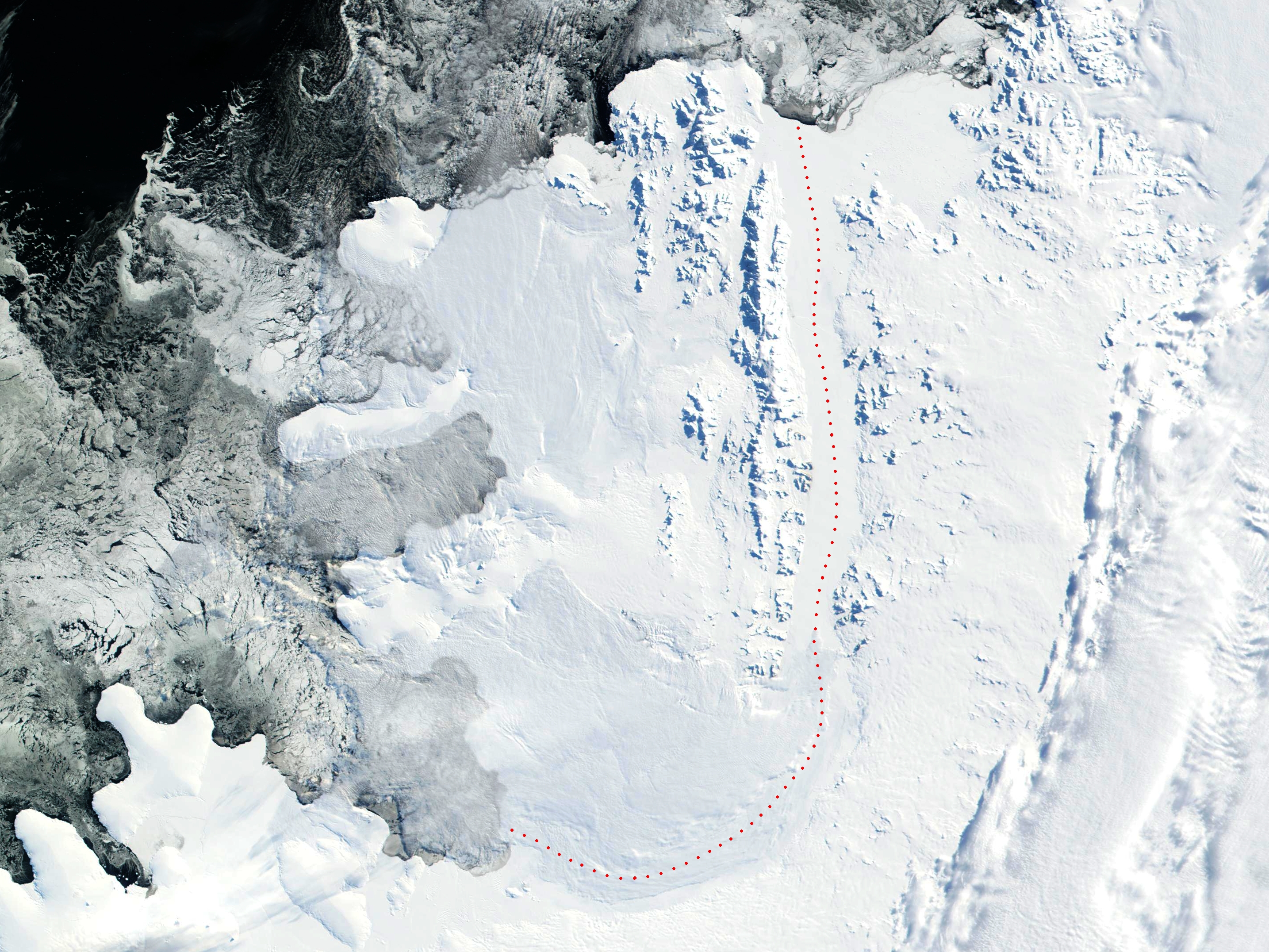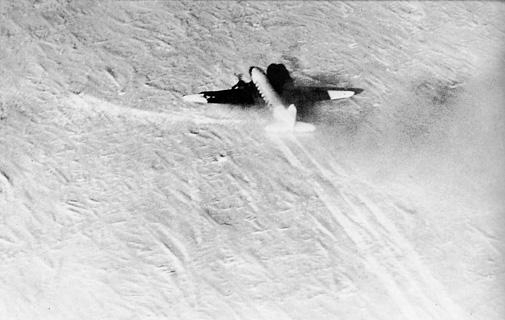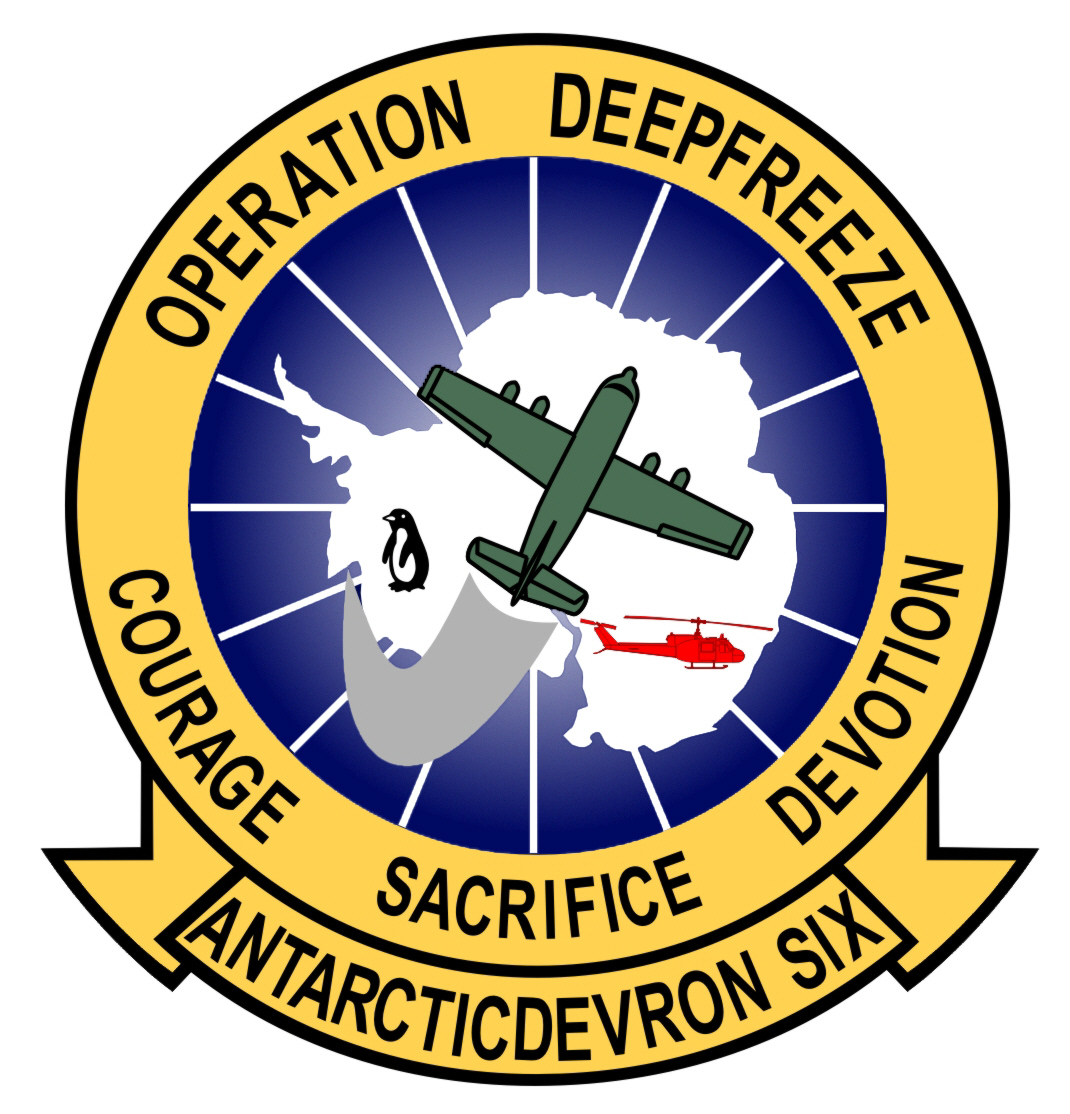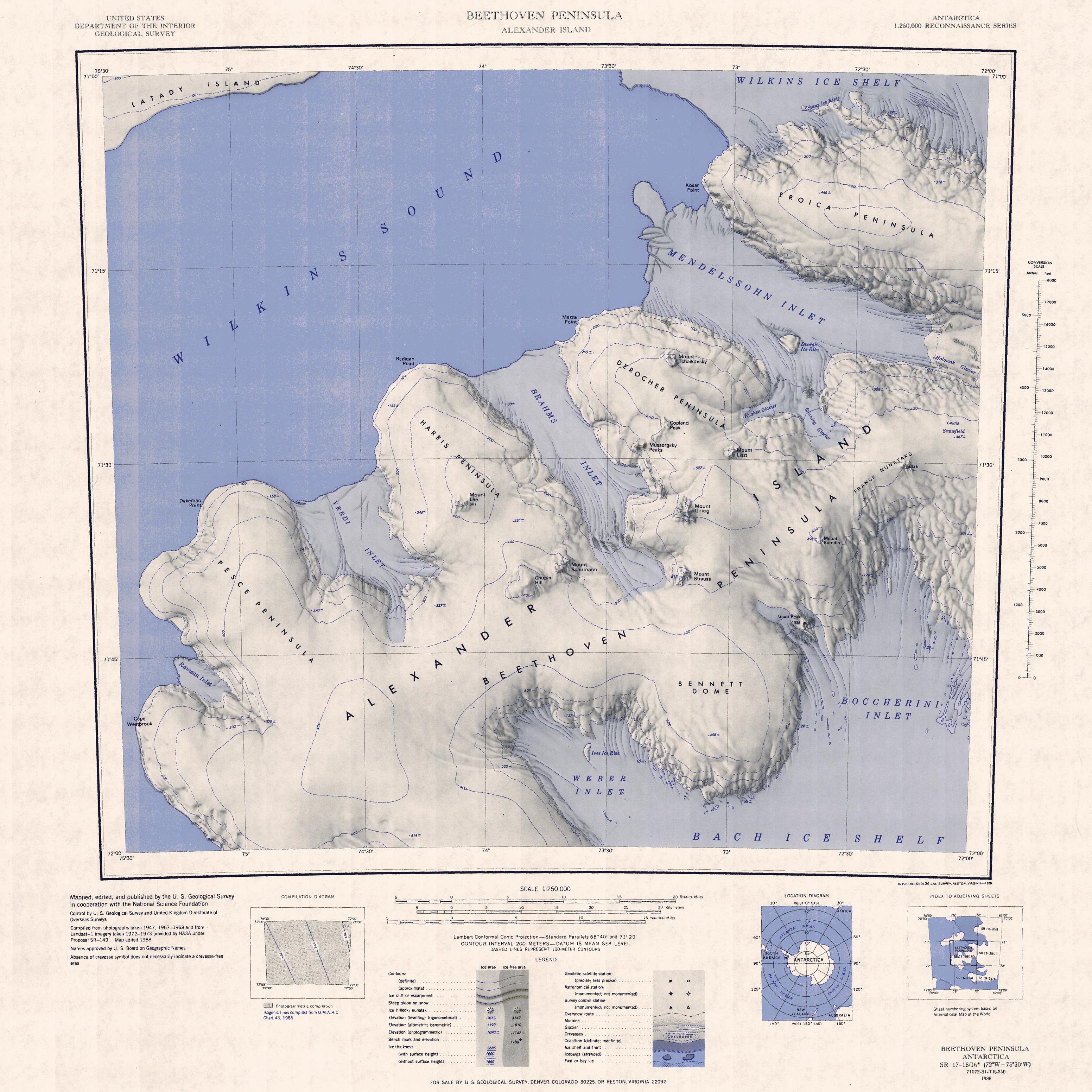|
Duffy Peak
Duffy Peak () is a peak southeast of Hageman Peak in the Staccato Peaks, southwest Alexander Island, Antarctica. Dargomyzhsky glacier extends and flows west from the base of Duffy Peak and enters the nearby Bach Ice Shelf. The peak was photographed from the air by Lincoln Ellsworth in 1935, and was named by the Advisory Committee on Antarctic Names for Lieutenant Commander Joseph A. Duffy, a U.S. Navy aircraft pilot in Squadron VXE-6 during Operation Deep Freeze Operation Deep Freeze (OpDFrz or ODF) is codename for a series of United States missions to Antarctica, beginning with "Operation Deep Freeze I" in 1955–56, followed by "Operation Deep Freeze II", "Operation Deep Freeze III", and so on. (There w ..., 1969 and 1970. See also * Gluck Peak * Lamina Peak * Copland Peak References Mountains of Alexander Island {{AlexanderIsland-geo-stub ... [...More Info...] [...Related Items...] OR: [Wikipedia] [Google] [Baidu] |
Hageman Peak
Hageman Peak () is a montane landform pinnacle rising to about at the northwest end of the Staccato Peaks in southern Alexander Island, Antarctica. The peak was photographed from the air by Lincoln Ellsworth in 1935, and was named by the Advisory Committee on Antarctic Names for Lieutenant Commander Roger H. Hageman, U.S. Navy, an LC-130 aircraft commander during Operation Deep Freeze, 1969. See also * Saint George Peak * Beagle Peak Beagle Peak () is a peak rising to about in the central part of the Lassus Mountains, Alexander Island, Antarctica. It is situated 5.55 km west by south of Moriseni Peak. The feature was named by the Advisory Committee on Antarctic Names ... * Giovanni Peak References Mountains of Alexander Island {{AlexanderIsland-geo-stub ... [...More Info...] [...Related Items...] OR: [Wikipedia] [Google] [Baidu] |
Staccato Peaks
Staccato Peaks () is a series of rock peaks extending 11 miles (18 km) in a north–south direction, rising to about 940 m with Hageman Peak Hageman Peak () is a montane landform pinnacle rising to about at the northwest end of the Staccato Peaks in southern Alexander Island, Antarctica. The peak was photographed from the air by Lincoln Ellsworth in 1935, and was named by the Advisor ... being the highest peak of the Staccato Peaks, rising from the snowfields 20 miles (32 km) south of the Walton Mountains in the south part of Alexander Island, Antarctica. The peaks were first sighted from the air by Lincoln Ellsworth on November 23, 1935, and mapped from photos taken on that flight by W.L.G. Joerg. Remapped from air photos taken by the Ronne Antarctic Research Expedition in 1947–48, by Searle of the Falkland Islands Dependencies Survey in 1960. The name, given by the United Kingdom Antarctic Place-Names Committee, refers to the precipitous and abrupt way in which t ... [...More Info...] [...Related Items...] OR: [Wikipedia] [Google] [Baidu] |
Alexander Island
Alexander Island, which is also known as Alexander I Island, Alexander I Land, Alexander Land, Alexander I Archipelago, and Zemlja Alexandra I, is the largest island of Antarctica. It lies in the Bellingshausen Sea west of Palmer Land, Antarctic Peninsula from which it is separated by Marguerite Bay and George VI Sound. The George VI Ice Shelf entirely fills George VI Sound and connects Alexander Island to Palmer Land. The island partly surrounds Wilkins Sound, which lies to its west.Stewart, J. (2011) ''Antarctic An Encyclopedia'' McFarland & Company Inc, New York. 1776 pp. . Alexander Island is about long in a north–south direction, wide in the north, and wide in the south. Alexander Island is the second-largest uninhabited island in the world, after Devon Island. History Alexander Island was discovered on January 28, 1821, by a Russian expedition under Fabian Gottlieb von Bellingshausen, who named it Alexander I Land for the reigning Tsar Alexander I of Russia. Wha ... [...More Info...] [...Related Items...] OR: [Wikipedia] [Google] [Baidu] |
Antarctica
Antarctica () is Earth's southernmost and least-populated continent. Situated almost entirely south of the Antarctic Circle and surrounded by the Southern Ocean, it contains the geographic South Pole. Antarctica is the fifth-largest continent, being about 40% larger than Europe, and has an area of . Most of Antarctica is covered by the Antarctic ice sheet, with an average thickness of . Antarctica is, on average, the coldest, driest, and windiest of the continents, and it has the highest average elevation. It is mainly a polar desert, with annual precipitation of over along the coast and far less inland. About 70% of the world's freshwater reserves are frozen in Antarctica, which, if melted, would raise global sea levels by almost . Antarctica holds the record for the lowest measured temperature on Earth, . The coastal regions can reach temperatures over in summer. Native species of animals include mites, nematodes, penguins, seals and tardigrades. Where vegetation o ... [...More Info...] [...Related Items...] OR: [Wikipedia] [Google] [Baidu] |
Bach Ice Shelf
The Bach Ice Shelf () is an ice shelf which is irregular in shape and in extent, occupying an embayment in the south part of Alexander Island entered between Berlioz Point and Rossini Point. The ice shelf supports the south face of the Beethoven Peninsula, along with some minor extensive peninsulas and small inlets (Weber Inlet, Boccherini Inlet etc.) Bach ice shelf also supports the north side of the Monteverdi Peninsula. A minor embayment in this position first appeared on the charts of the US Antarctic Service, which explored the south part of Alexander Island by air and from the ground in 1940. The ice shelf was delineated by Derek J.H. Searle of the Falkland Islands Dependencies Survey in 1960, from air photos obtained by the Ronne Antarctic Research Expedition in 1947–48. It was named by the UK Antarctic Place-Names Committee after the German composer Johann Sebastian Bach. In a 2009 review, the Bach Ice Shelf was listed as one of 5 Antarctic peninsula Ice shelves ... [...More Info...] [...Related Items...] OR: [Wikipedia] [Google] [Baidu] |
Lincoln Ellsworth
Lincoln Ellsworth (May 12, 1880 – May 26, 1951) was a polar explorer from the United States and a major benefactor of the American Museum of Natural History. Biography Lincoln Ellsworth was born on May 12, 1880, to James Ellsworth and Eva Frances Butler in Chicago, Illinois. He also lived in Hudson, Ohio, as a child. He attended The Hill School and took two years longer than usual to graduate, before entering the Sheffield Scientific School at Yale University. His academic performance was poor, and he subsequently enrolled at Columbia University and McGill before ending his academic career. Lincoln Ellsworth's father, James, a wealthy coal man from the United States, spent US$100,000 to fund Roald Amundsen's 1925 attempt to fly from Svalbard to the North Pole. Amundsen, accompanied by Lincoln Ellsworth, pilot Hjalmar Riiser-Larsen, flight mechanic Karl Feucht and two other team members, set out in two Dornier Wal flying boats, the N24 and N25, in an attempted to reach the ... [...More Info...] [...Related Items...] OR: [Wikipedia] [Google] [Baidu] |
Advisory Committee On Antarctic Names
The Advisory Committee on Antarctic Names (ACAN or US-ACAN) is an advisory committee of the United States Board on Geographic Names responsible for recommending commemorative names for features in Antarctica. History The committee was established in 1943 as the Special Committee on Antarctic Names (SCAN). It became the Advisory Committee on Antarctic Names in 1947. Fred G. Alberts was Secretary of the Committee from 1949 to 1980. By 1959, a structured nomenclature was reached, allowing for further exploration, structured mapping of the region and a unique naming system. A 1990 ACAN gazeeter of Antarctica listed 16,000 names. Description The United States does not recognise territorial boundaries within Antarctica, so ACAN assigns names to features anywhere within the continent, in consultation with other national nomenclature bodies where appropriate, as defined by the Antarctic Treaty System. The research and staff support for the ACAN is provided by the United States Geologi ... [...More Info...] [...Related Items...] OR: [Wikipedia] [Google] [Baidu] |
Joseph A
Joseph is a common male given name, derived from the Hebrew Yosef (יוֹסֵף). "Joseph" is used, along with "Josef", mostly in English, French and partially German languages. This spelling is also found as a variant in the languages of the modern-day Nordic countries. In Portuguese and Spanish, the name is "José". In Arabic, including in the Quran, the name is spelled '' Yūsuf''. In Persian, the name is "Yousef". The name has enjoyed significant popularity in its many forms in numerous countries, and ''Joseph'' was one of the two names, along with ''Robert'', to have remained in the top 10 boys' names list in the US from 1925 to 1972. It is especially common in contemporary Israel, as either "Yossi" or "Yossef", and in Italy, where the name "Giuseppe" was the most common male name in the 20th century. In the first century CE, Joseph was the second most popular male name for Palestine Jews. In the Book of Genesis Joseph is Jacob's eleventh son and Rachel's first son, and k ... [...More Info...] [...Related Items...] OR: [Wikipedia] [Google] [Baidu] |
VXE-6
Antarctic Development Squadron Six (VXE-6 or ANTARCTIC DEVRON SIX, commonly referred to by its nickname, The Puckered Penguins) was a United States Navy air test and evaluation squadron based at Naval Air Station Point Mugu, California with forward operating bases at Christchurch, New Zealand and McMurdo Station, Antarctica. Established at Naval Air Station Patuxent River, Maryland on 17 January 1955 as Air Development Squadron Six (VX-6), the squadron's mission was to conduct operations in support of Operation Deep Freeze, the operational component of the United States Antarctic Program. The squadron relocated to Naval Air Station Quonset Point, Rhode Island on 1 February 1956. On 1 January 1969 the squadron was redesignated Antarctic Development Squadron Six (VXE-6). Following the closure of NAS Quonset Point in the 1970s, the squadron relocated to NAS Point Mugu. Using the tail codes ''XD'' (1955) and ''JD'' (1957), the squadron flew numerous aircraft over the course of its e ... [...More Info...] [...Related Items...] OR: [Wikipedia] [Google] [Baidu] |
Operation Deep Freeze
Operation Deep Freeze (OpDFrz or ODF) is codename for a series of United States missions to Antarctica, beginning with "Operation Deep Freeze I" in 1955–56, followed by "Operation Deep Freeze II", "Operation Deep Freeze III", and so on. (There was an initial operation before Admiral Richard Byrd proposed 'Deep Freeze'). Given the continuing and constant US presence in Antarctica since that date, "Operation Deep Freeze" has come to be used as a general term for US operations in that continent, and in particular for the regular missions to resupply US Antarctic bases, coordinated by the United States military. Task Force 199 was involved. Prior to International Geophysical Year The U.S. Navy already had a record of earlier exploration in Antarctica. As early as 1839, Captain Charles Wilkes led the first U.S. Naval expedition into Antarctic waters. In 1929, Admiral Richard E. Byrd established a naval base at Little America I, led an expedition to explore further inland, and c ... [...More Info...] [...Related Items...] OR: [Wikipedia] [Google] [Baidu] |
Gluck Peak
Gluck Peak () is a rock peak, high, located south-southwest of Mount Borodin and immediately north of Alyabiev Glacier, lying between the bases of Bennett Dome and Shostakovich Peninsula on south side of the Beethoven Peninsula, southwest Alexander Island, Antarctica. It was first mapped from air photos taken by the Ronne Antarctic Research Expedition, 1947–48, by D. Searle of the Falkland Islands Dependencies Survey in 1960, and was named by the UK Antarctic Place-Names Committee after Christoph Willibald von Gluck, the Austrian composer (1714-1787). See also * Holst Peak * Ravel Peak * Simon Peak Further reading * J.L. SMELLIE, Lithostratigraphy of Miocene-Recent, alkaline volcanic fields in the Antarctic Peninsula and eastern Ellsworth Land', Antarctic Science 71 (3): 362-378 (1999) External links Gluck Peak on USGS website Gluck Peakon SCAR A scar (or scar tissue) is an area of fibrous tissue that replaces normal skin after an injury. Scars result from t ... [...More Info...] [...Related Items...] OR: [Wikipedia] [Google] [Baidu] |





